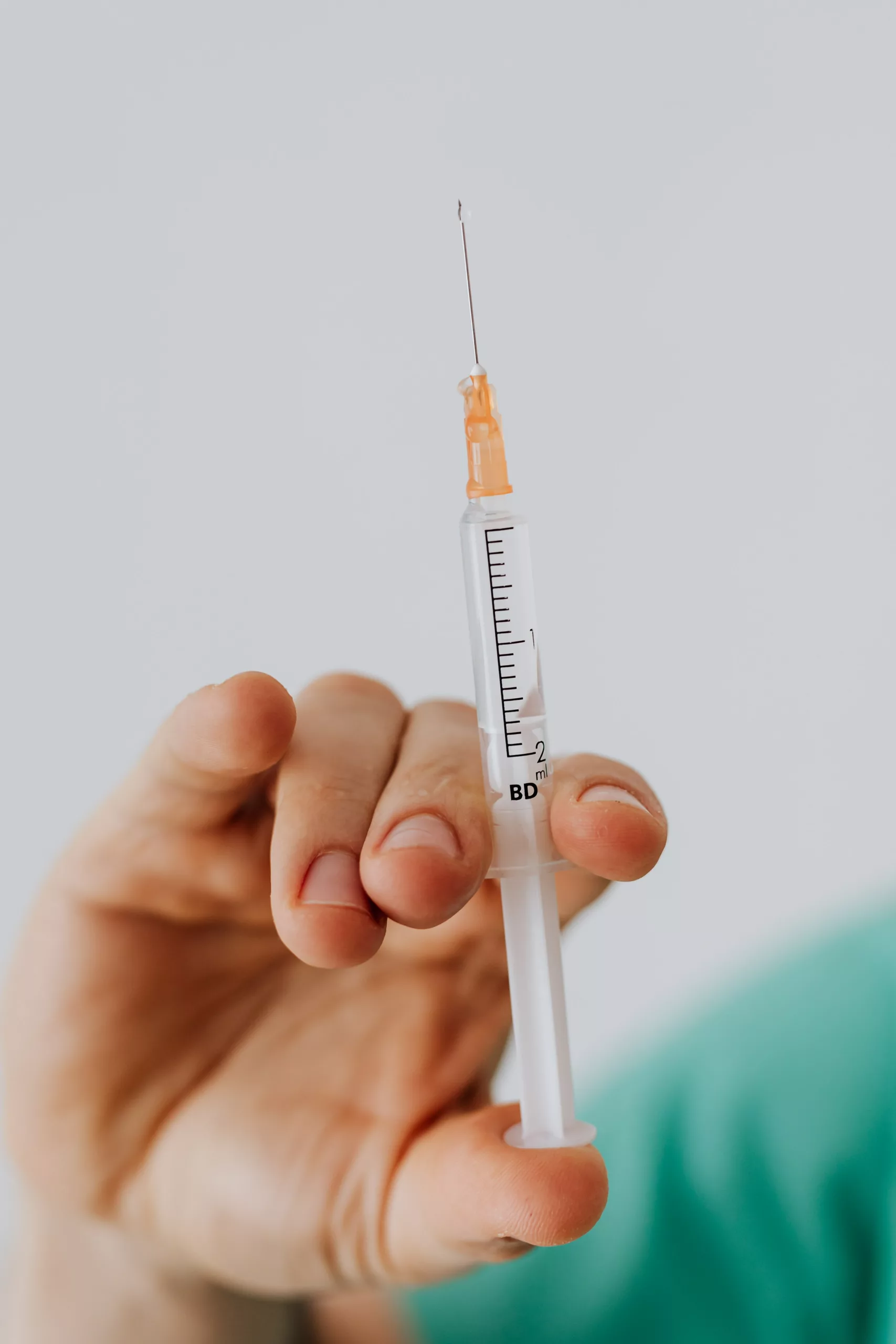Cervical Dystonia, also known as spasmodic torticollis, is a neurological disorder characterized by involuntary and sustained contractions of the muscles in the neck and shoulders. These repetitive movements result in abnormal and often painful positions of the head, known as Dystonia. The contractions can manifest as constant, intermittent, or occurring in a sporadic pattern.
It can cause significant physical discomfort and emotional distress, impacting one’s quality of life.
Symptoms of Cervical Dystonia
Symptoms of disease vary from patient to patient. A few are mentioned below:
Head Tilt:
The earliest sign is a tilting of the head to either side. It occurs when the neck muscles contract involuntarily, causing the head to tilt to one side or the other. Initially, the tilt may be subtle and may not cause much discomfort. However, as the condition progresses, the tilt becomes more pronounced and may even result in the head-turning at an angle that feels unnatural. The severity of the tilt can vary among individuals, ranging from mild to severe.
Pain in the Neck:
Pain in the neck is the second most common symptom of cervical Dystonia. The persistent and involuntary muscle contractions can lead to strain and tension in the neck muscles, resulting in discomfort or pain.

Involuntary Contractions:
Involuntary muscular spasms in the neck, shoulder, or upper back may be an early symptom of cervical Dystonia. These spasms might induce jerks or abrupt movements.1Jinnah HA, Factor SA. Diagnosis and treatment of Dystonia. Neurol Clin. 2015 Feb;33(1):77-100. doi: 10.1016/j.ncl.2014.09.002. PMID: 25432724; PMCID: PMC4248237.. The contractions can be intermittent or persistent, and their severity can range from mild to severe.
Abnormal Posture:
As it advances, the head may assume an aberrant position, such as being dragged forward, backward, or to one side. It is especially noticeable when the individual is attempting to maintain a neutral stance.2Nakamura S, Mimori Y. [Dystonia]. Nihon Rinsho. 1993 Nov;51(11):2835-41. Japanese. PMID: 8277558.
Headaches:
Sometimes, an individual may present with headaches as an early sign of cervical Dystonia. The constant muscle contractions and abnormal head positions can lead to tension and strain in the neck and surrounding muscles, resulting in headaches. These headaches may vary in intensity and frequency and should not be ignored, as they can indicate an underlying neurological issue.
Limited Range of Motion in the Neck:
Due to the involuntary contractions of the muscles in the neck and shoulders, individuals with cervical Dystonia may experience a limited range of motion in their neck. This restriction can make it challenging to move the head freely and comfortably, affecting day-to-day activities such as driving, reading, or turning to look in different directions.
Causes of Cervical Dystonia
Cervical Dystonia evolves due to a combination of acquired and environmental triggers. Some of the most typical causes are as follows:
Genetic Predisposition:
A person’s genetic makeup can affect their susceptibility to cervical Dystonia. Some individuals may have a genetic predisposition that makes them more prone to developing this neurological condition.
Whiplash:
Neck trauma, such as accidents or injuries causing whiplash, can trigger it. Furthermore, in some cases, head injuries or neck surgeries may also lead to the onset of cervical Dystonia.
Infections:
Certain ongoing infections, such as Lyme disease, have been associated with developing cervical Dystonia. In these cases, the infection may act as a triggering factor for the condition.3Predkele N, Mednieks J. Lyme Disease and Associated NMDAR Encephalitis: A Case Report and Literature Review. Neurol Int. 2021 Sep 28;13(4):487-496. doi: 10.3390/neurolint13040048. PMID: 34698265; PMCID: PMC8544377.
Medication:
Certain medications, particularly neuroleptics and antipsychotics, have been linked to the development of Dystonia, including cervical Dystonia. In some individuals, these drugs can induce the onset of the condition.
Neurological Disorders:
Other pre-existing neurological disorders related to the nervous system can also lead to cervical Dystonia. Dysfunction in the basal ganglia, a group of brain structures involved in movement control, is one of the factors that can contribute to the development of this condition.
It’s essential to understand that the exact causes of cervical Dystonia can vary among individuals, and in many cases, the precise underlying cause may not be fully understood. Furthermore, some individuals may develop it without any identifiable trigger or cause. If someone experiences symptoms, medical evaluation and consultation with a neurologist are crucial to determine the appropriate diagnosis and treatment plan.
How is Cervical Dystonia Diagnosed?
Healthcare professionals primarily diagnose cervical Dystonia through a comprehensive evaluation involving a clinical examination and a thorough patient history. They rely on their expertise and experience to identify the characteristic signs and symptoms of cervical Dystonia. Additionally, they may observe how the symptoms manifest during different activities or postures to gain further insight into the nature of the condition. Unlike some medical conditions, cervical Dystonia does not have specific laboratory or imaging tests that can definitively confirm its presence. As a result, the diagnosis relies heavily on the information gathered during the evaluation process.
Laboratory tests, including blood work, do not reveal any abnormalities specific to cervical Dystonia. Similarly, individuals with this condition typically have a normal brain magnetic resonance imaging (MRI) result. Although an MRI of the neck can be conducted, it does not directly serve as a diagnostic tool for cervical Dystonia unless there is a suspicion of spinal cord compression as an underlying cause. In most cases, the doctor primarily uses these imaging tests to rule out other potential causes of the symptoms.
Electromyography (EMG), which measures the electrical activity of muscles, may not be necessary unless there are additional signs of nerve irritation or if healthcare providers need to rule out other conditions that affect nerve function.
Treatment of Cervical Dystonia
It does not have a single definitive treatment, but various alternative treatment options are available to help alleviate the symptoms and improve the patient’s quality of life.4Ferreira JJ, Costa J, Coelho M, Sampaio C. The management of cervical Dystonia. Expert Opin Pharmacother. 2007 Feb;8(2):129-40. doi: 10.1517/14656566.8.2.129. PMID: 17257084.
Treatment mainly aims at relief from the pain as the first management step. Once a patient is pain-free, the physician plans the complete treatment plan. Treatment may be one of the following or a mixture of each step to relieve the patient’s pain.
Oral Drugs:
Various oral medications may be prescribed to manage symptoms and help control muscle contractions. These medications can include muscle relaxants, anticholinergic drugs, and certain anti-seizure medications. However, the effectiveness of these medications can vary among individuals, and they may be used in conjunction with other treatments.
Physical Therapy:
Physical therapy can assist in improving the range of motion and alleviate pain associated with cervical Dystonia. Stretches, exercises, and posture training may help to reduce symptoms. Moreover, it enhances motion range, reduces muscle spasms, and increases the muscle’s strength.
Botox for Cervical Dystonia:
Botox has emerged as a highly popular treatment option nowadays. It operates by inhibiting acetylcholine, a neurotransmitter that transmits signals from the brain to the muscles. Consequently, Botox effectively reduces muscle spasms by blocking the release of acetylcholine. The healthcare provider typically administers the treatment in multiple sessions, ensuring that the effects can persist for several months.5Velickovic M, Benabou R, Brin MF. Cervical dystonia pathophysiology and treatment options. Drugs. 2001;61(13):1921-43. doi: 10.2165/00003495-200161130-00004. PMID: 11708764.

Surgery:
In extreme cases, physicians may recommend surgery as a treatment option for Dystonia. The most frequently employed surgical approach for cervical Dystonia is deep brain stimulation (DBS).6Hu W, Stead M. Deep brain stimulation for dystonia. Transl Neurodegener. 2014 Jan 21;3(1):2. doi: 10.1186/2047-9158-3-2. PMID: 24444300; PMCID: PMC3902434. In DBS, surgeons place electrodes in the brain. The electrodes deliver electrical impulses to modulate abnormal brain activity and reduce dystonic movements.
Complementary & Alternative Therapies:
Acupuncture, massage treatment, and biofeedback may comfort some persons with cervical Dystonia. Patients should undergo these therapies in conjunction with medical treatments and under the supervision of a healthcare expert.
Cervical Dystonia Exercises
Cervical dystonia exercises play a valuable role alongside medication and physical therapy in managing the condition. These exercises are designed to reduce muscle spasms and enhance the range of motion in the neck. Some examples of beneficial activities include:
Neck Stretches:
Performing neck stretches can effectively reduce muscle spasms and improve the flexibility of the neck. These stretches help relax the tense muscles and increase their range of motion.
Neck Strengthening:
To manage it effectively, individuals should engage in neck-strengthening exercises. These exercises focus on fortifying the neck muscles, providing better support to the neck, reducing spasms, and promoting overall stability.
Posture:
Good posture helps alleviate muscle spasms and enhances the strength of the neck muscles, thereby supporting the neck’s stability. Individuals can improve their ability to manage symptoms by actively maintaining correct posture.
Conclusion
In conclusion, cervical Dystonia is a neurological disorder characterized by repeated, involuntary contractions of the neck muscles, resulting in a twisting and painful position of the head. While no definitive treatment exists, alternative therapies offer pain relief and symptom management. Along with all the therapies, it is important to consult a physician to plan a proper treatment plan.
Refrences
- 1Jinnah HA, Factor SA. Diagnosis and treatment of Dystonia. Neurol Clin. 2015 Feb;33(1):77-100. doi: 10.1016/j.ncl.2014.09.002. PMID: 25432724; PMCID: PMC4248237.
- 2Nakamura S, Mimori Y. [Dystonia]. Nihon Rinsho. 1993 Nov;51(11):2835-41. Japanese. PMID: 8277558.
- 3Predkele N, Mednieks J. Lyme Disease and Associated NMDAR Encephalitis: A Case Report and Literature Review. Neurol Int. 2021 Sep 28;13(4):487-496. doi: 10.3390/neurolint13040048. PMID: 34698265; PMCID: PMC8544377.
- 4Ferreira JJ, Costa J, Coelho M, Sampaio C. The management of cervical Dystonia. Expert Opin Pharmacother. 2007 Feb;8(2):129-40. doi: 10.1517/14656566.8.2.129. PMID: 17257084.
- 5Velickovic M, Benabou R, Brin MF. Cervical dystonia pathophysiology and treatment options. Drugs. 2001;61(13):1921-43. doi: 10.2165/00003495-200161130-00004. PMID: 11708764.
- 6Hu W, Stead M. Deep brain stimulation for dystonia. Transl Neurodegener. 2014 Jan 21;3(1):2. doi: 10.1186/2047-9158-3-2. PMID: 24444300; PMCID: PMC3902434.

